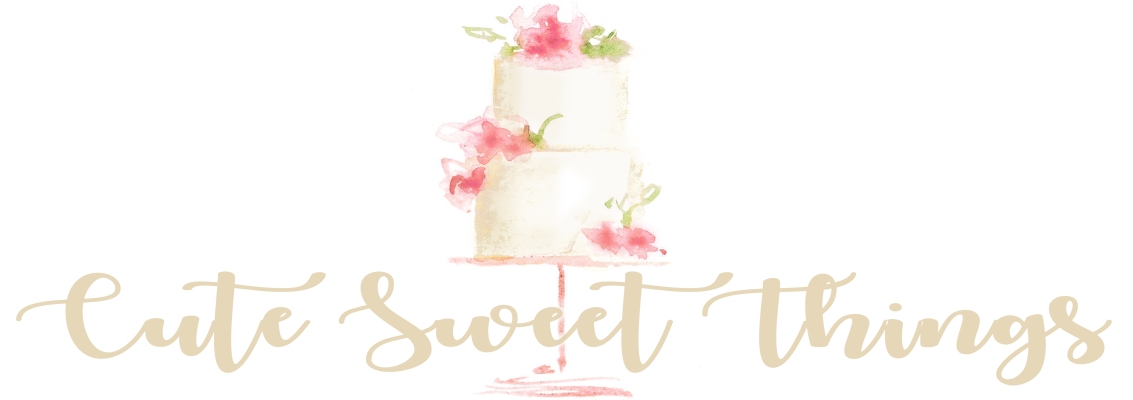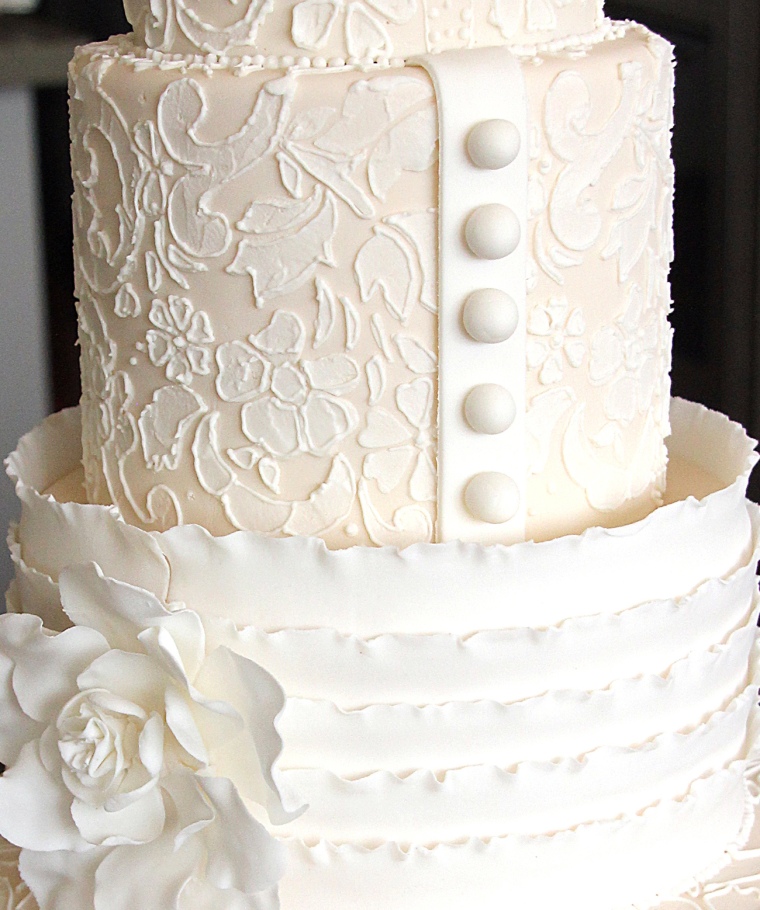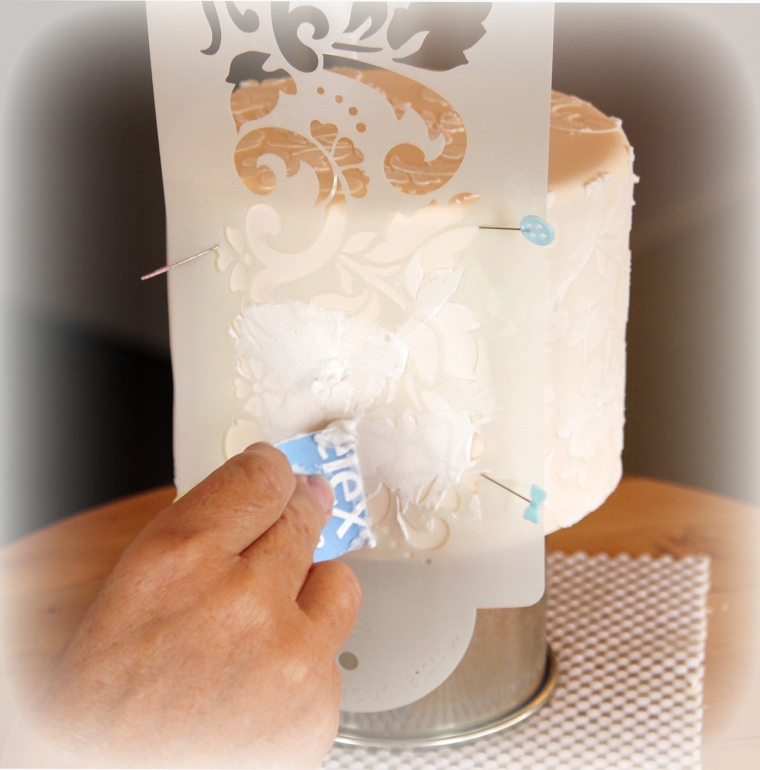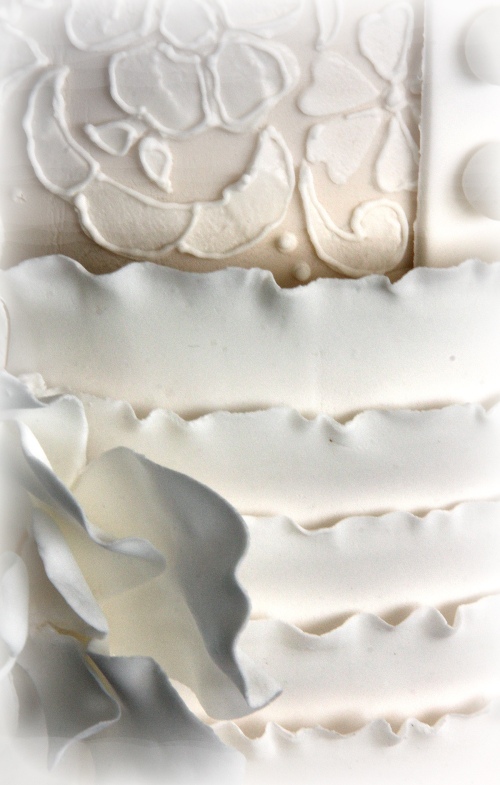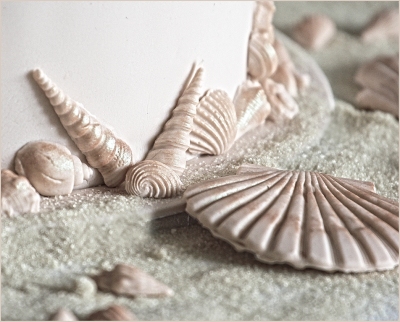This fabulous cake took a good many hours to complete but I think it was worth every minute of my time.
Here are the dimensions of the cakes I made…………
4″ round x 3.5″ high:
5″ round x 4.5″ high:
6″ Dummy tier x 3″ high:
8″ round x 4.5″ high.
You could alter these sizes a little with no great consequence.
I would like to show you how to achieve a stunning lace effect on a cake using stencils and piping.
To get the best possible results use a different colour of stencil icing from the colour of your cake.
This cake is champagne and the Icing for the stencil is white.
I used 3 of the set of 4 Designer Stencils.
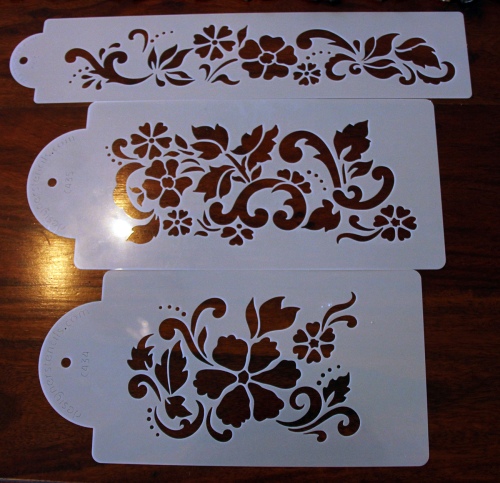
I will be stencilling the second from top tier of this 4 tiered cake, the tier with the buttons.
As this tier will be stencilled all over I will need to position my stencil vertically and fix in position with pins or tooth picks.
Mix up some white Royal Icing (RI) till it forms soft peaks and apply a thin coat using a bendy scrapper.
I made my scrappers in various widths from square and rectangular Lurpak / margarine tubs.

You can remove the stencil before it dries. You will, however, need to wait till the RI dries before re-attaching the stencil for the next section (5 – 10 mins)
Once you have stencilled the sides of the cake, this tier requires that you stencil on top. Try to align the stencil with the pattern on the sides and complete in segments.
To get the full lace effect on your finished cake you will need to outline all the stencilled flowers and leaves with RI using a piping bag fitted with a small tip ( 00, 0 or 1 ). This is very time consuming but gives a fabulous lacy texture to your cake.

Please also visit my website at http://www.cutesweetthings.com to purchase a cake or just to browse my cake galleries.
